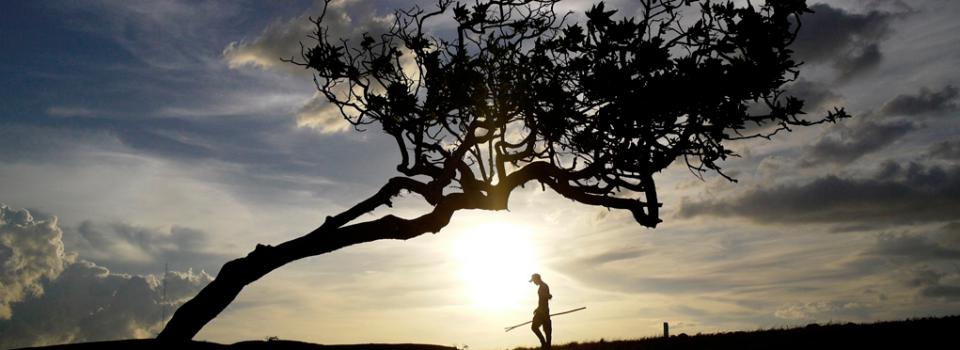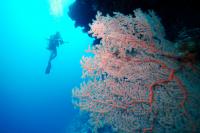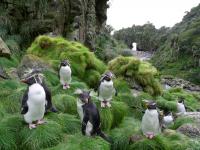Positive outlook for two thirds of natural World Heritage sites, says IUCN
Sydney, Australia, 13 November 2014 (IUCN) – Over 60% of natural areas inscribed on the World Heritage List are likely to be well conserved over time, while others face critical threats such as invasive species, impact of tourism, poaching, dams and logging, according to the IUCN World Heritage Outlook 2014 report released today at the IUCN World Parks Congress in Sydney.
The report by IUCN, International Union for Conservation of Nature, is the first global assessment of natural World Heritage and the first to recognize conservation success in the world’s most iconic places. It is based on expert assessments of all 228 natural World Heritage sites. Up to now, only about half of the listed sites have been regularly monitored through the UNESCO World Heritage Convention.
According to the report, 21% of natural World Heritage sites have a good conservation outlook, 42% are classified as ‘good with some concerns’, 29% face significant concerns and 8% of the sites are assessed as ‘critical’. Out of the many values that these sites possess, biodiversity is found to be facing the highest level of threat.
“World Heritage sites have the most prestigious international designation and those who manage them should demonstrate exemplary leadership for all protected areas,” says Julia Marton Lefèvre, Director General of IUCN. “Thanks to the IUCN World Heritage Outlook, we can see which sites have been successfully conserved and encourage the World Heritage Convention to secure the long-term protection of all the sites under its umbrella.”
The IUCN Outlook aims to track overall trends and changes occurring within the sites, taking into account threats, protection and management, and the state of World Heritage values, such as biodiversity, ecosystems and geological features.
World Heritage sites with a good conservation outlook include Uluru-Kata Tjuta National Park – recognized across the globe as a symbol of Australia – and Mount Huangshan, whose astounding landscapes has captivated artists and poets in China for centuries. The natural features of these sites are in good condition and should be protected over time, provided current conservation measures are maintained. Other sites assessed as ‘good’ include the iconic Swiss Alps Jungfrau-Aletsch, Hawaii Volcanoes National Park and Namib Sand Sea.
The Great Barrier Reef, whose fragile reef ecosystem and marine biodiversity are at risk, has been assessed as a site of ‘significant concern’. Calls for stronger responses to the threats it faces have already been made by the World Heritage Committee. Some sites, however, have been off the Convention’s radar despite serious issues that are not being adequately addressed. For example, the report identifies concerns about the impacts of fishing on the conservation of Indonesia’s Komodo National Park, which is home to the Komodo Dragon.
Affected by severe threats, 19 sites have a critical outlook and need urgent, large-scale intervention to protect their values. Many of them are listed by UNESCO as World Heritage sites ‘in danger’, such as Selous Game Reserve, where poaching has dramatically reduced the number of elephants. But not all sites facing severe threats are danger-listed, including Mexico’s Monarch Butterfly Biosphere Reserve, whose exceptional role in protecting Monarch Butterflies during winter is threatened by deforestation and agricultural activities.
“World Heritage stands for excellence in management and the new World Heritage Outlook is a call for action so that all listed sites unequivocally demonstrate the best in conservation,” says Cyril Kormos, Vice Chair of the IUCN World Commission on Protected Areas. “This new platform is not just about checking how things are going. It also promotes new ways to care for our natural World Heritage, so that sites facing critical issues can achieve a positive outlook.”
The report shows that 54% of the assessed sites are well managed, while there is serious concern about the quality of management in 13%. Effective management is often key to securing a good conservation outlook despite high threats faced by the sites. For example, Aldabra Atoll in the Seychelles faces serious threats from invasive species but its outlook is ‘good with some concerns’ thanks to a carefully planned management approach.
Natural World Heritage sites are globally recognized as the world’s most important protected areas, inscribed on the UNESCO World Heritage List for their unique natural values, such as the scale of natural habitats, intactness of ecological processes, viability of populations of rare species, as well as exceptional natural beauty.
The report is available online for free and its next edition is planned for 2017. All site assessments can be accessed on worldheritageoutlook.iucn.org.









